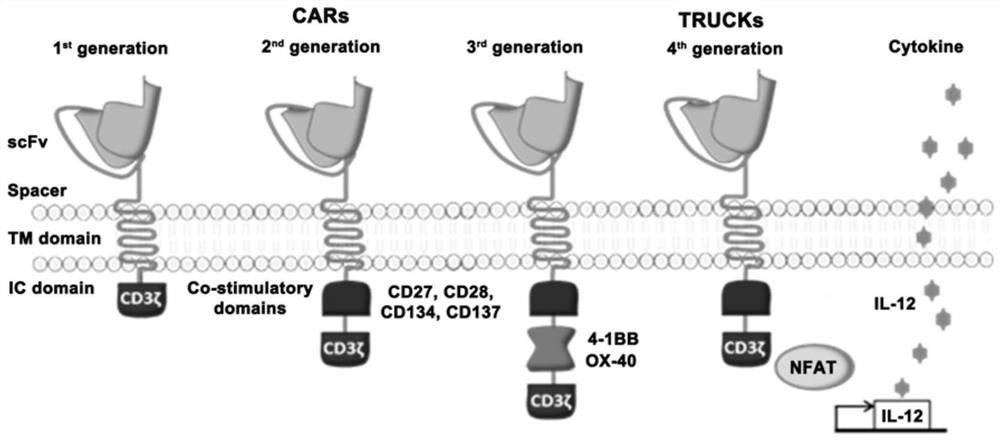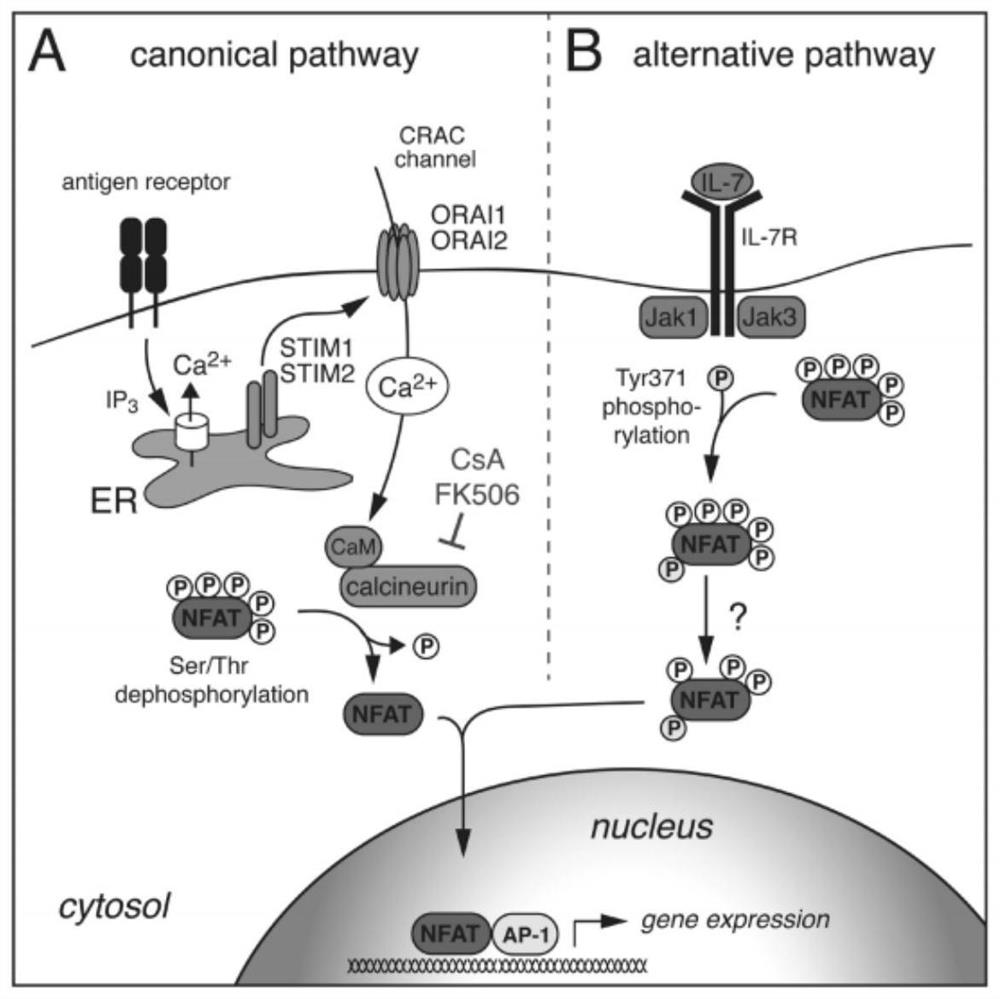Cell activation-dependent secretion system and application
A secretory system-dependent technology, applied in the field of immunotherapy and cell biology, can solve the problems of increasing the complexity of CAR-T cell technology, restricting the application, and damaging the activity of T cells, so as to avoid systemic toxicity and improve the immune system. Tumor effect, effect of reducing toxic and side effects
- Summary
- Abstract
- Description
- Claims
- Application Information
AI Technical Summary
Problems solved by technology
Method used
Image
Examples
Embodiment 1
[0086] Example 1 Construction of NK cell-based cell activation-dependent secretion system
[0087] The invention constructs a cell activation-dependent secretion system by taking nano luciferase as a model of bioactive molecules.
[0088] First, a multi-gene co-expression vector regulated by a single promoter is constructed by using the self-cleaving 2A polypeptide, such as Figure 5 As shown in A, the multi-gene co-expression vector regulated by a single promoter includes a NK cell-specific CAR region, and a membrane-bound nanoluciferase (Membrane-bound Nanoluciferase, Membrane-bound Nanoluciferase, MbNanoLuc) region, the MbNanoLuc region is also known as the secretory element domain. The CAR of NK cells contains scFv, CD8hinge, NKG2D TM, 2B4 IC and CD3ζ, and the MbNanoLuc region includes leader sequence (LS), HAtag and NanoLuc, enzyme-cleaved substrate polypeptide (Substrate peptide, SP) and CD8hinge&TM.
[0089] Secondly, by detecting the activity of free nano-luciferase ...
Embodiment 2
[0100] Example 2 Construction of T cell-based cell activation-dependent secretion system
[0101] First, a multi-gene co-expression vector regulated by a single promoter was constructed. The co-expression vector included a T cell-specific CAR region and a membrane-bound nano-luciferase (Membrane- bound Nanoluciferase, MbNanoLuc) region, the MbNanoLuc region is also known as the secretory element domain. The CAR of T cells contains scFv, CD8hinge, CD8TM, 4-1BB IC, CD3ζ structure, MbNanoLuc region including leader sequence (LS), HAtag and NanoLuc, enzyme-cleaved substrate polypeptide (Substrate peptide, SP) and CD8hinge&TM.
[0102] Secondly, by detecting the activity of free nano-luciferase to determine whether the secreted Gran B can effectively cut MbNanoLuc, and then verify the feasibility of the system. T cells were transduced by lentivirus technology to co-express CAR and membrane-bound Nanoluciferase (MbNanoLuc) containing Gran B-specific cleavage substrate polypeptide; ...
Embodiment 3
[0115] Example 3 Construction of NK cell-based cell activation-dependent secreted chemokine system
[0116] Construction of a CAR-NK cell system that secretes mouse XCL1 (mXCL1) chemokine in an activation-dependent manner.
[0117] (1) First, according to the vector construction method described in Example 1, construct a CAR co-expression vector for cell activation-dependent secretion of mXCL1, select IEFD as the cleavage substrate polypeptide, and connect the sequence region of mXCL1 and the transmembrane region such as Figure 9 Shown in A; after the successful construction of the plasmid, the lentivirus was packaged, and the NK92 cells were transduced after measuring the virus titer;
[0118] (2) Flow cytometric detection of lentiviral transduction efficiency of NK92 cells: 72 hours after transduction, flow cytometric detection of transduction efficiency, CAR expression was stained with Biotin-Protein L and Streptavidin-APC (secondary antibody), and anti-HA was used Tag-Al...
PUM
 Login to View More
Login to View More Abstract
Description
Claims
Application Information
 Login to View More
Login to View More - R&D Engineer
- R&D Manager
- IP Professional
- Industry Leading Data Capabilities
- Powerful AI technology
- Patent DNA Extraction
Browse by: Latest US Patents, China's latest patents, Technical Efficacy Thesaurus, Application Domain, Technology Topic, Popular Technical Reports.
© 2024 PatSnap. All rights reserved.Legal|Privacy policy|Modern Slavery Act Transparency Statement|Sitemap|About US| Contact US: help@patsnap.com










